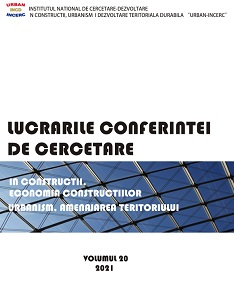Noise control in buildings, based on a model for the noise of human conversation
Noise control in buildings, based on a model for the noise of human conversation
Author(s): Evert Ph. J. de Ruiter
Subject(s): Architecture
Published by: INCD URBAN-INCERC
Keywords: group vocal output; noise control; feed back; speech intelligibility; sound absorption;
Summary/Abstract: It is a well-known phenomenon, that a (large) group of people in one room can (and often will) produce high sound levels. Even when asked to be quiet, after some time voices become louder and sound levels increase (again) to a certain rather constant value. Can this value be forecast? Can it be controlled to some extent? For this purpose a model was set up, based on the circumstance that people in a gathering tend to start conversations, and want to understand and be understood. Speech intelligibility is the key word, in combination with the fact that people raise their voices in noisy circumstances, the Lombard effect. Of course much will depend on the characteristics of the gathering, the people, the type of occasion etc. The results of the model reflect this spread; nevertheless the results are useful in noise control. Measurements in practice support this.
- Page Range: 23-28
- Page Count: 6
- Publication Year: 2021
- Language: English
- Content File-PDF

